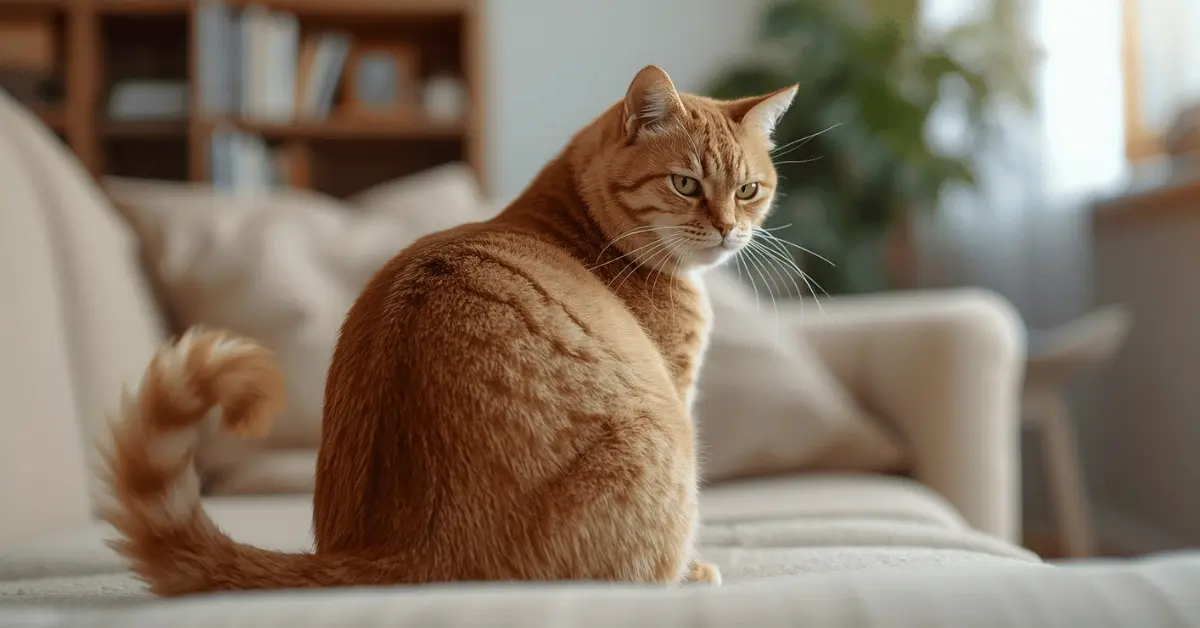Cats are mysterious creatures. They purr, cuddle, and show affection in ways that warm our hearts—but they can also be moody and unpredictable. Unlike dogs, who usually wear their feelings on their sleeves, cats are subtle communicators. If your cat is upset, you won’t see them throwing a tantrum or sulking dramatically.
1. Avoiding Eye Contact or Turning Away
Cats are usually curious observers, often locking eyes with their humans. But when a cat deliberately avoids eye contact, it can mean they’re upset. If they turn their head away as you approach or refuse to acknowledge you altogether, it’s a passive-aggressive feline gesture that signals displeasure.
Why Cats Do This
By turning away, your cat is saying, “I’m ignoring you on purpose.” It’s a subtle yet powerful way to communicate irritation without engaging directly.
2. Refusing Physical Affection
If your normally cuddly cat suddenly refuses to sit on your lap, avoids being petted, or runs off when you try to pick them up, it may be their way of letting you know they’re upset.
What This Behaviour Means
Cats crave control over their environment. If they’re upset, they withdraw affection as a way of reclaiming personal space and showing disapproval.
3. Excessive Grooming or Ignoring Grooming
Changes in grooming habits are strong indicators of stress or emotional upset in cats.
Over-Grooming as a Stress Response
Some cats lick themselves excessively when frustrated, which can even lead to bald patches. This is their version of stress relief.
Neglecting Grooming as a Silent Protest
On the flip side, a cat that stops grooming altogether may be showing signs of depression, anger, or frustration.
4. Tail Flicking and Ear Position Changes
Your cat’s body language is one of the most revealing indicators of mood.
Flicking Tail Like a Whip
A slow swish may indicate mild irritation, but rapid tail flicking is often a clear sign of anger or agitation.
Ears Tilted Back or Flattened
Flattened ears signal that your cat feels threatened, annoyed, or frustrated. This often accompanies tail flicking when they’re especially mad.
5. Unusual Litter Box Behaviour
Cats are meticulous creatures when it comes to their bathroom habits. If your cat suddenly starts peeing outside the litter box, it’s rarely an accident.
Using the Litter Box to Send a Message
In some cases, cats use inappropriate elimination as a form of protest, particularly if they’re upset with a change in routine, environment, or even something you’ve done.
When to See a Vet
While sometimes linked to anger or stress, litter box changes can also signal health issues. If the behaviour persists, consult your vet to rule out medical causes. (For more details on litter box behaviour, you can check resources like the American Veterinary Medical Association for expert insights.)
6. Withdrawing from Playtime and Interaction
Cats love stimulation and play. If your cat suddenly loses interest in their favourite toys or refuses to engage during play sessions, it could mean they’re upset with you.
How Withdrawal Shows Displeasure
By pulling back from activities they once enjoyed, your cat is signaling that they’re either unhappy with your actions or need time to cool off.
Related Posts
- 6 Reasons Why Your Cat Sneezes All the Time
- Why Do Cats Knead Blankets and Pillows?
- Why Do Cats Cry Like Babies at Night?
How to Make Peace With an Upset Cat
Recognizing the signs is only half the battle—repairing the relationship is the next step. Cats respond best to patience, consistency, and respect for their boundaries. A few effective strategies include:
- Give them space – Let your cat come to you when they’re ready.
- Offer treats or favourite toys – Use positive reinforcement to rebuild trust.
- Stick to routines – Cats thrive on predictability, so feeding and play schedules help reassure them.
- Avoid punishment – Yelling or scolding only makes things worse; instead, focus on calm, gentle interactions.
Conclusion
Cats may not slam doors or roll their eyes, but they certainly have ways of expressing displeasure. From tail flicks to ignoring your affection, these subtle signals are your cat’s way of saying, “I’m mad at you.” By paying attention to these behaviours and responding with patience and care, you can rebuild trust and strengthen your bond with your feline friend.

